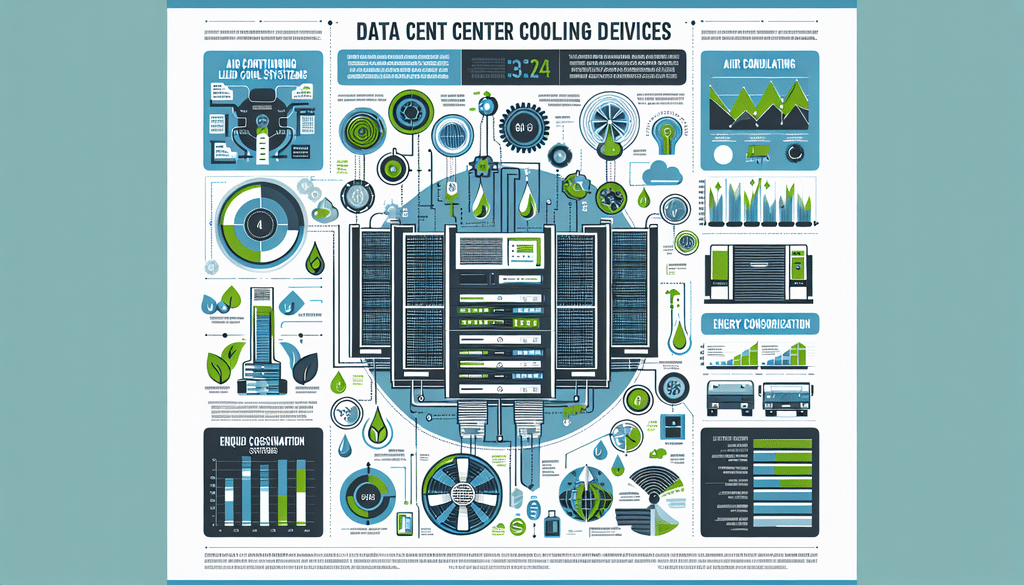In today’s era of rapid technological advancement, the data center cooling equipment market is undergoing significant changes. As demand for data storage and processing capabilities surges, ensuring optimal operational conditions in data centers becomes imperative. This blog post delves into current trends, challenges, and innovations shaping the data center cooling landscape.
Understanding the Importance of Cooling Equipment
Data centers are the backbone of the digital world, housing servers and networking hardware that store and manage massive amounts of information. One of the most critical factors affecting the performance of these facilities is temperature management. Here are key reasons why cooling is vital:
- Prevention of Equipment Overheating: Servers generate considerable heat during operation, which can lead to hardware failures if not properly managed.
- Enhancement of Performance: Optimal temperatures ensure that servers operate efficiently, directly impacting processing speeds and reliability.
- Energy Efficiency: Effective cooling solutions can lead to significant energy savings, translating into lower operational costs.
Current Market Trends
The data center cooling equipment market is increasingly influenced by various trends that are reshaping its future. Here are some of the most notable:
1. Growing Demand for Energy-Efficient Solutions
As sustainability becomes a focal point for businesses globally, there is a significant shift towards energy-efficient cooling systems. The proliferation of green technologies in cooling equipment is not merely driven by environmental regulations, but also by the need to reduce operational costs. Advances in technologies such as:
- Direct-to-chip cooling: A method that delivers cooling directly to heat-generating components.
- Evaporative cooling: Utilizing water to absorb heat, enhancing cooling efficiency.
- Liquid cooling: A technique gaining traction for tackling issues related to high-density racks.
2. Modular Data Centers and Their Unique Cooling Needs
With the advent of modular data centers, which allow for rapid deployment and scalability, the cooling requirements are evolving. These systems demand flexible and efficient solutions. Innovations in cooling technology are surfacing to accommodate these mobile data centers. Key features include:
- Adjustable cooling capacity: Systems that can scale up or down based on server load.
- Integrated thermal management: Solutions that address cooling in conjunction with other system functionalities.
3. Increased Adoption of Machine Learning and AI
Artificial intelligence (AI) and machine learning are becoming critical components in managing data center cooling. These technologies help optimize cooling processes by:
- Predictive analytics: Forecasting temperature fluctuations and adjusting cooling dynamically.
- Real-time monitoring: Tracking performance metrics to identify inefficiencies and predict failures.
4. Rise of Edge Computing
The push towards edge computing is redefining cooling strategies, as data is processed closer to its source to reduce latency. Edge facilities often operate in less controlled environments, necessitating specialized cooling solutions. This trend leads to:
- Decentralized cooling systems: Allowing for localized management, enhancing efficiency and reliability.
- Hybrid cooling solutions: Combining traditional and innovative methods tailored for edge locations.
Challenges Facing the Data Center Cooling Equipment Market
Despite advancements, the data center cooling equipment market faces several challenges that players must navigate:
1. High Initial Costs
The capital investment required for state-of-the-art cooling systems can be substantial. While long-term savings are evident, many organizations hesitate to adopt new technologies due to upfront costs.
2. Space Constraints
As data centers evolve, space becomes a premium, leading to congested environments that complicate cooling efforts. Efficient layout designs and innovative cooling solutions are essential to overcome this barrier.
3. Regulatory Compliance
With increasing scrutiny on energy consumption and emissions, data centers must comply with an array of local and international regulations. This landscape is continually changing, requiring constant vigilance and adaptation from operators.
Future Outlook
As we look forward, the data center cooling equipment market is poised for growth, driven by innovation and sustainability. Key trends anticipated to dominate include:
- Enhanced use of renewable energy sources: Utilizing solar and wind energy to power cooling operations.
- Integration of cooling with renewable energy systems: Implementing hybrid systems to enhance efficiency.
- Advanced materials: Using high-performance insulation and reflective coatings to improve energy conservation.
Conclusion
The data center cooling equipment market is evolving rapidly, driven by technological advancements, sustainability goals, and the push for efficiency. By understanding these trends and challenges, businesses can make informed decisions about their cooling strategies and ensure they remain competitive in a data-driven world.





